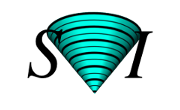™Huygens Crosstalk & Autofluorescence Corrector
Easy to use Wizard with automated estimation and correction
Crosstalk & Autofluorescence Corrector Tile Stitching Light Sheet Fuser Object Stabilizer PSF Distiller Hot & Cold Pixel Remover
Bleaching CorrectorCrosstalk (also known as bleed-through) is a phenomenon in multi-channel microscopy where signal from one dye is collected as signal from another dye, i.e., signal seems to come from one dye when it really comes from another. Autofluorescence, the natural emission of light by biological structures, can similarly interfere with signals collected from specific dyes. Crosstalk presents a significant obstacle in single-channel analyses and multi-channel techniques such as colocalization or object-based analysis, where channel distinction is crucial. The new Huygens CrossTalk & Autofluorescence Corrector Wizard effectively estimates and corrects crosstalk between up to 32 channels at once, making it particulary useful for 'Spatial Biology' imaging studies. Since many multichannel datasets also suffer from chromatic aberration, you may want to have a look at the Chromatic Aberration Corrector to ensure optimal channel alignment.
Mitochondrial (TMRM) red signal is also detected in the green Lipid Droplet (BODIPY) channel due to crosstalk. Upper part: both channels; Lower part: only the green channel. The spinning disk image is shown before and after correction with Huygens Crosstalk Corrector. Courtesy: Kevin Knoops (Microscopy CORE Lab), Sabine Daemen and Matthijs Hesselink, Maastricht University, The Netherlands.
Automatic and Easy
Accurate correction
More accurate analysis
Crosstalk Corrector
Autofluorescence Corrector
When choosing autofluorescence correction in the Crosstalk & Autofluorescence Corrector Wizard, you'll be asked to provide a reference image of the autofluorescence of the sample. The wizard will then estimate the autofluorescence within every channel and subtract it from the other channel. Any additional crosstalk between the used dyes, will also be corrected by this same wizard.
Related products
Multi-channel images often suffer from some form of chromatic aberration, which should be corrected before performing analyses. Huygens offers a wide range of analysis options, for example the assessment of the colocalization between different molecules.
Chromatic Aberration Corrector Colocalization Analyzer